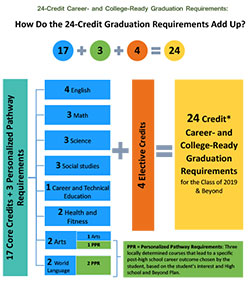Apply Now
Essential Guide to Writing a Literary Analysis in 2025
Literary analysis is an art that encapsulates the intricate relationship between the text and its readers. In 2025, as literary criticism continues to evolve, honing your analytical skills is more crucial than ever. This guide will provide you with key strategies to craft an insightful literary analysis, focusing on essential components such as narrative techniques, character development, and thematic exploration.
Understanding how to effectively dissect a piece of literature will empower you not only to appreciate its beauty but also to articulate your interpretation coherently. With the emergence of new literary theories and critical approaches, engaging with texts has taken on new dimensions. This article will explore the components of a strong thesis statement, the importance of text evidence, and the role of various literary devices. You'll also come to know how to approach literary critiques with fresh perspectives that enhance your engagement with the text.
Key takeaways from this article include:
- The significance of a robust thesis statement,
- Understanding key literary devices and their impact on narrative development,
- Crafting coherent arguments supported by textual evidence.
Let's dive in!
How to Develop a Strong Thesis Statement
Building a compelling thesis statement is vital in any literary analysis. A well-crafted thesis serves as the cornerstone of your essay, guiding your argument and the direction of your analysis.
Understanding the Role of a Thesis
The thesis statement encapsulates the main argument of your analysis. It should not merely state a fact but rather present an argumentative viewpoint that reflects your interpretation of the text. For instance, rather than saying, "The protagonist faces challenges," you might argue, "The protagonist's struggle illustrates the pervasive theme of isolation in modern literature." This approach allows for deeper exploration and sets the foundation for your entire essay.
Techniques for Crafting a Thesis
When crafting your thesis, start by reading the text closely and identifying central themes, motifs, and conflicts. Utilize a brainstorming technique such as mind mapping to visualize relationships among different elements within the text.
In forming your thesis, ensure it is specific and debatable; avoid vague generalities. For example, rather than claiming, "There are many symbols in the novel," you could say, "The recurring use of water in the novel symbolizes the character's journey toward redemption." This specificity engages your audience and allows for rigorous examination of your claims.
Revising Your Thesis Statement
Revisions are integral to developing a solid thesis statement. After drafting your analysis, revisit your thesis to ensure it aligns with the arguments you presented. Seek feedback from peers or mentors during the writing process. They might provide insights that could refine your argument further.
Building on these techniques, we now shift our focus to effective strategies for incorporating literary devices into your analysis.
Incorporating Literary Devices and Techniques
Literary devices form the backbone of textual analysis, enabling readers to uncover deeper meanings and artistic intentions. Understanding how to identify and engage with these elements will enrich your analysis and make your arguments more persuasive.
Identifying Key Literary Devices
Familiarize yourself with various literary devices such as symbolism, foreshadowing, and irony. Each device contributes uniquely to the narrative structure and character development, helping articulate the author's intent. For example, symbolism can reveal underlying themes—think of how a withering tree in a novel may denote loss and decay.
Analyzing Characters through Development
Character development is another crucial aspect of literary analysis. Investigate how an author constructs a character's arc through dialogue, actions, and internal thoughts. What motivates the character? How does their evolution contribute to the overall theme? By exploring character dynamics, you can provide a more nuanced critique.
Examining Plot Structure
Understanding plot structure—exposition, rising action, climax, falling action, and resolution—is essential. Each segment serves a purpose in building tension and conveying the theme. By analyzing how these elements interact within the narrative, you can reveal the author’s stylistic choices and their efficacy in developing the central message.
With these strategies in place, let’s move on to how to effectively gather and analyze textual evidence to support your arguments.
Gathering and Analyzing Text Evidence
Support your claims with robust textual evidence; doing so enriches your analysis and lends credibility to your arguments. Effective use of quotes and textual references shapes your reader's understanding of your critique.
Strategies for Effective Quoting
When selecting quotes, choose lines that directly relate to your thesis or the points you are arguing. Introduce each quote seamlessly into your analysis to maintain the flow of your writing. Instead of inserting quotes abruptly, provide context. For example, "As the protagonist reflects on her past mistakes, she states, 'This path does not lead to comfort,' indicating her internal struggle with regret."
Analyzing the Evidence
Do not merely present quotes; delve into their implications and significance within the text. Discuss how each quote strengthens your argument, connecting back to your thesis. By offering interpretations of textual evidence, you allow for clarity and precision in your analysis.
Balancing Summary and Analysis
While referencing the text is critical, avoid excessive summarization. Each summary should serve a purpose—directly supporting your argument while remaining succinct. When summarizing, focus on pivotal events that align with your thesis while infusing analytical insights to deepen your critique.
Having established the import of textual evidence in your analysis, we can now explore the various perspectives and contexts that shape literary interpretations.
Understanding Context and Author's Intent
Context and authorial intent are integral to comprehending a literary work. Understanding when and why a text was written allows for more profound insights into its themes and messages.
Historical and Cultural Context
Analyzing the historical and cultural backdrop of a text can reveal deeper layers of meaning. Research the time period in which the author lived to appreciate societal norms and expectations that influenced their writing. For example, a novel written during a time of war may carry themes of conflict, trauma, or resilience.
The Author's Background and Intent
Exploring the author’s life can also provide insights into their writing. Consider their experiences, motivations, and what they aim to convey through their work. An understanding of the author's intent can shape your interpretation and critique, allowing you to engage with the text more critically.
Identifying Different Perspectives
Literary analysis is enriched through multiple perspectives, such as feminist, postcolonial, and psychoanalytic lenses. By employing diverse theoretical frameworks, you can discover thematic complexities and challenge traditional interpretations. Incorporating these viewpoints encourages a well-rounded analysis, fostering critical thought and individuality in your writing.
This naturally leads us to discuss the structural components of your literary analysis, which play a significant role in conveying your arguments effectively.
Mastering Essay Structure and Writing Process
An organized approach to essay writing ensures clarity and coherence. Understanding the structural components of your literary analysis will enhance the reader's comprehension and engagement.
Structuring Your Essay for Clarity
A well-structured essay typically includes an introduction, body paragraphs, and a conclusion. Start with a hook in your introduction to capture your reader's attention. Follow with background information contextualizing your text before presenting your thesis statement.
Each body paragraph should revolve around a single idea supporting your thesis. Begin with a topic sentence that outlines the paragraph's main point, followed by evidence, analysis, and a concluding sentence that reiterates the connection to your thesis.
Effective Conclusion Writing
Your conclusion is not merely a summary of your points but a final reflection on your argument. Restate your thesis in new words, synthesizing the key insights developed throughout your analysis. Discuss the broader implications of your findings and encourage the reader to think critically about the text.
Refining Through Editing and Peer Review
The writing process does not end with your first draft. Engage in peer review and expert feedback to refine your argument and improve clarity. Editing should focus on ensuring coherence, precision, and grammatical correctness. Embrace the revision process as it significantly enhances the quality of your writing.
In writing an effective literary analysis, you will inevitably face questions and challenges. Here are some common queries that can assist in enhancing your understanding.
Q&A Section: Common Questions About Literary Analysis
What is the primary purpose of a literary analysis?
The primary purpose is to interpret and evaluate a piece of literature critically. This involves examining literary devices, themes, and the author’s intent, engaging with the text on a deeper level.
How can I improve my close reading skills?
Improve close reading skills by practicing active reading techniques—annotating texts, asking questions, and summarizing passages as you go. This method encourages engagement and fosters clearer interpretations.
Why is text evidence important in literary analysis?
Text evidence grounds your analysis in the text, lending credibility to your interpretation. It demonstrates a thorough understanding of the material and supports your arguments with concrete examples.
In conclusion, mastering literary analysis is a multifaceted process that requires critical reading and clear writing skills. By incorporating a strong thesis, analyzing literary devices, and grounding your arguments in textual evidence, you can construct compelling essays. This guide has provided an insightful roadmap to navigate the nuances of literary analysis in 2025.




